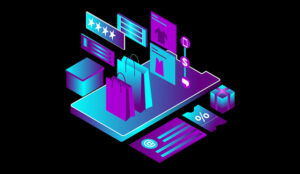Craig Charles Webster of Infobip shares his vision of what retail’s customer experience transformation will look like in 2021.
Retail’s customer experience transformation was already underway before the global pandemic hit. Embracing more digital technologies, and making small steps towards omnichannel strategies, retailers looked to transform their digital customer experiences.
But when the pandemic struck, customer experience transformation was no longer a nice to have. The shift to digital channels forced retailers to transform in a matter of months as they lost one of their key touchpoints: face-to-face interactions.
Now, with vaccines starting to roll out around the world, there seems to be light at the end of the tunnel for physical retail. People will return to stores to browse, try things on, and interact with your staff once again.
However, it would be naïve to think that shopping will go back to anything we would consider normal. Customers who’ve been shopping online and using delivery or pickup to get what they want or need are getting used to the convenience and efficiency of digital shopping — and they may not be so quick to go back to their old ways.
So what can we learn from the recent 2020 holiday shopping season? How will this impact customer experience transformation in 2021 and beyond?
What 2020 Holiday Shopping Tells Us About Customer Experience Transformation
We surveyed more than 1,200 U.S. consumers to understand how people were doing their 2020 holiday shopping during the pandemic – and what this means for customer experience transformation initiatives in 2021.
It’s no surprise that shoppers planned to do more online shopping during the 2020 holiday season. What’s more surprising is that people planned to shop the same amount or even more than they did during the 2019 holiday season.
Consumer behaviors and expectations have changed – from viewing the digital side of your business as just another channel, to thinking about it as the front door.
Our findings suggest that the digital customer experience after COVID-19 will look a lot more like the customer experiences we saw during the pandemic than what came before.
Here’s what else we learned – and what it means for your customer experience transformation in 2021:
1. Shoppers Are Comfortable Using More Digital Channels
Our report shows how shoppers are using a growing array of digital channels to connect with retail brands – with 35% of shoppers saying they’re happier to engage with retail brands on more digital channels since the pandemic started.
Shoppers also expect retailers to be tech-savvy, with 72% of people saying that any store that expects their business during the holidays should have the latest and greatest technology.
In turn, consumers are relying on digital channels to replace the customer interaction experience, with email, chatbots, social media, text, and WhatsApp all growing in popularity.
Even when the threat of COVID-19 is over, many shoppers will continue to prefer the convenience and immediacy of chat and automated customer service tools, choosing these over contact call queues and trips to physical stores.
We can also expect the end-to-end customer journey to become increasingly digital, characterized by channel shifting and non-linear customer journeys.
What’s clear is that retailers must revisit activities like their customer journey mapping and leverage a central point of customer data to provide consistent and compelling experiences across all these touchpoints.
2. Chatbots Are Growing in Popularity
Chatbots made rapid strides in 2020, with 25% of shoppers using them to engage retailers – and with 69% of shoppers rating their customer service chatbot experiences as “excellent” or “very good.”
The caveat here is that shoppers increasingly expect chatbots to understand their intent, provide proactive personalized recommendations, and seamlessly hand over to human agents for more complex issues.
3. Retailers Need to Personalize at Scale
89% of shoppers told us that customer service is more important than ever – but 74% say that the messaging they receive from retail brands lacks personalization.
This means that now, more than ever, retailers need to adopt an omnichannel customer engagement strategy that provides proactive and valuable engagement at every touchpoint in the customer journey.
You can learn more about how to deliver personalized, contextual interactions at scale with our post on omnichannel marketing automation vs. multichannel.
Author: Guest Author
Published On: 5th Apr 2021
Read more about - Guest Blogs, Infobip



































